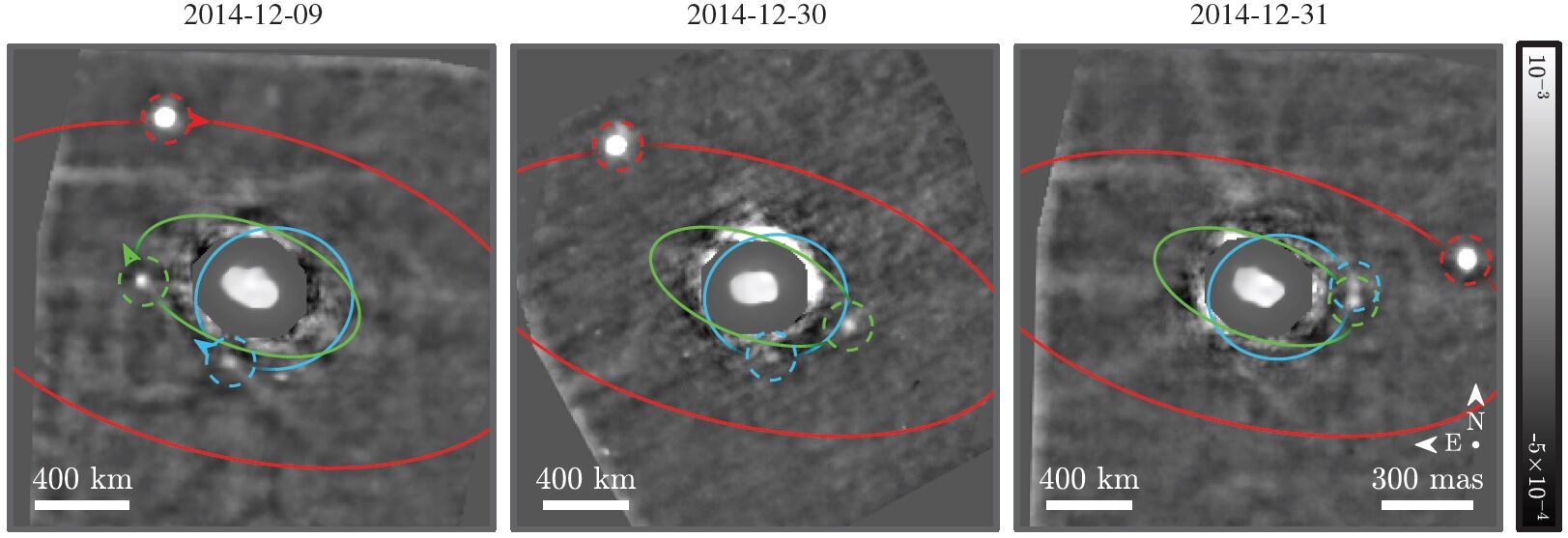Comment: 130 Elektra is a large outer main-belt asteroid.
High-resolution adaptive optics (AO) systems have played a key role in these discoveries. Here, Berdeu et al. reanalyse SPHERE/IFS archival data of (130) Elektra, a large (~200 km diameter) main belt asteroid with two small moons (6 km and 2 km) previously known. To carefully remove the halo of the primary, they used their newly developed processing technique that combines a data reduction pipeline for SPHERE/IFS and a dedicated point spread function reconstruction algorithm. In doing so, they identified the presence of a third satellite of (130) Elektra in images from three different epochs in December 2014. The new satellite, which is the innermost of the system, cruises on an elliptical and probably inclined orbit with a semi-major axis of 344 km. With a relative magnitude to the primary of 10.5 ± 0.5, its size is estimated to be 1.6 ± 0.4 km. While more data are needed to refine its orbit and constrain the formation mode, this new detection makes (130) Elektra the second richest system among Solar System small bodies, being surpassed only by Pluto and its five moons.
Vol. 6581. Letters to the Editor
by A. Berdeu, M. Langlois, and F. Vachier 2022, A&A, 658, L4




Comment: See also: